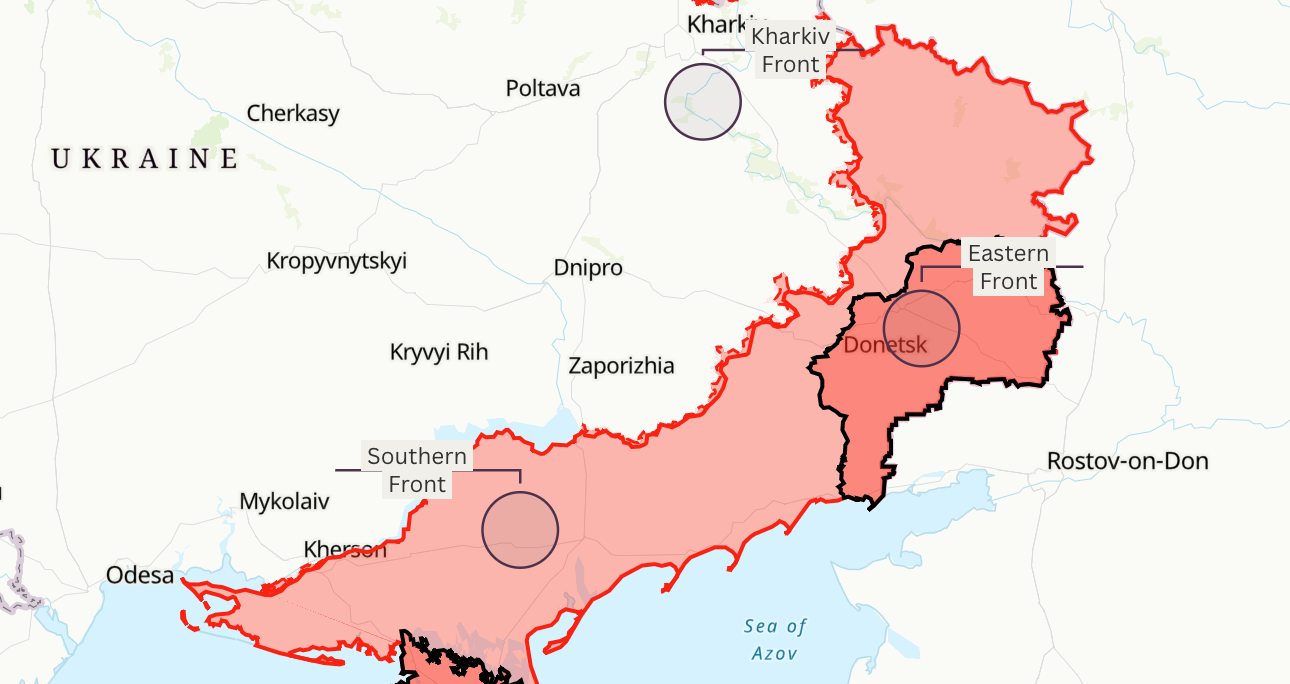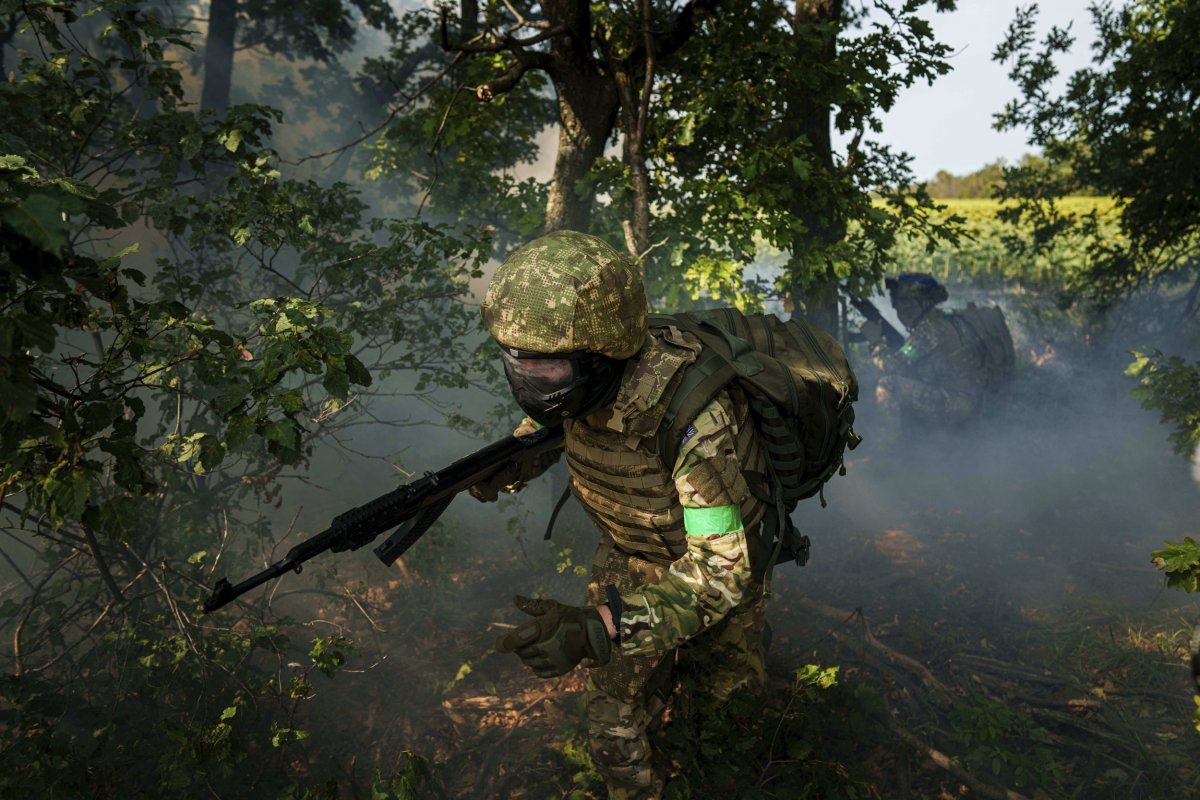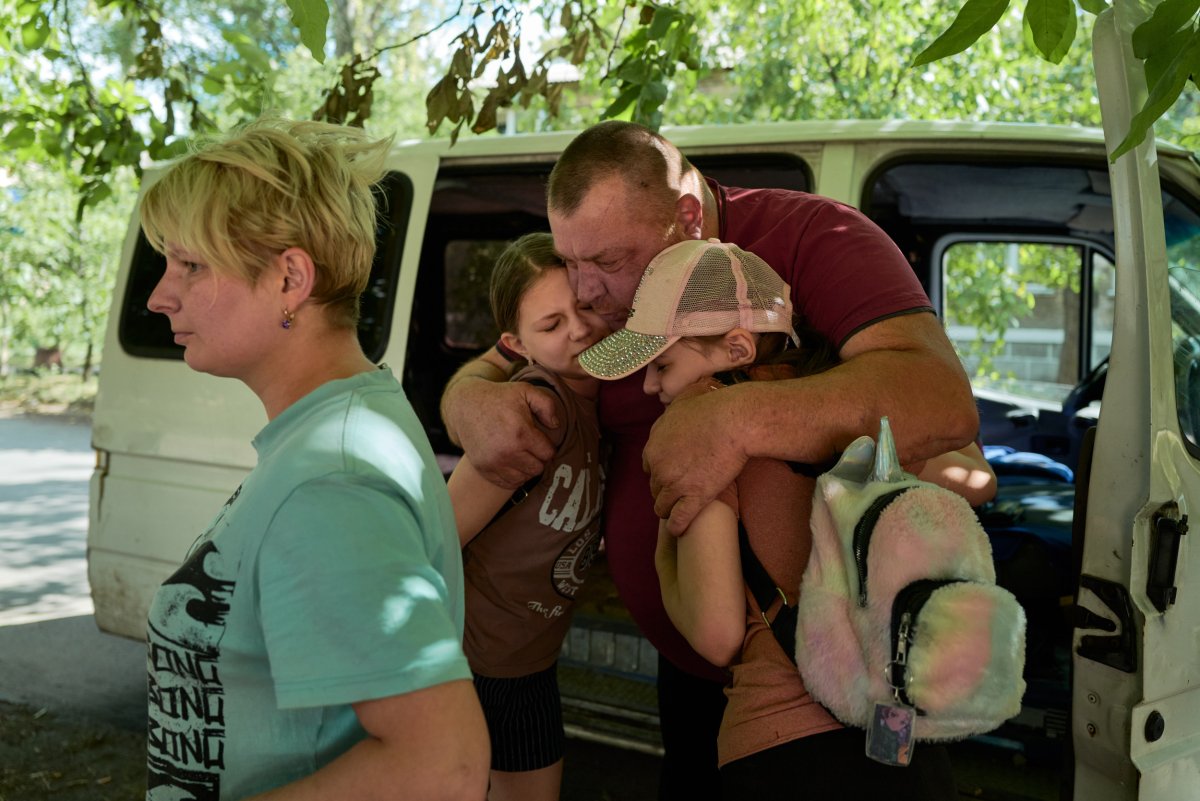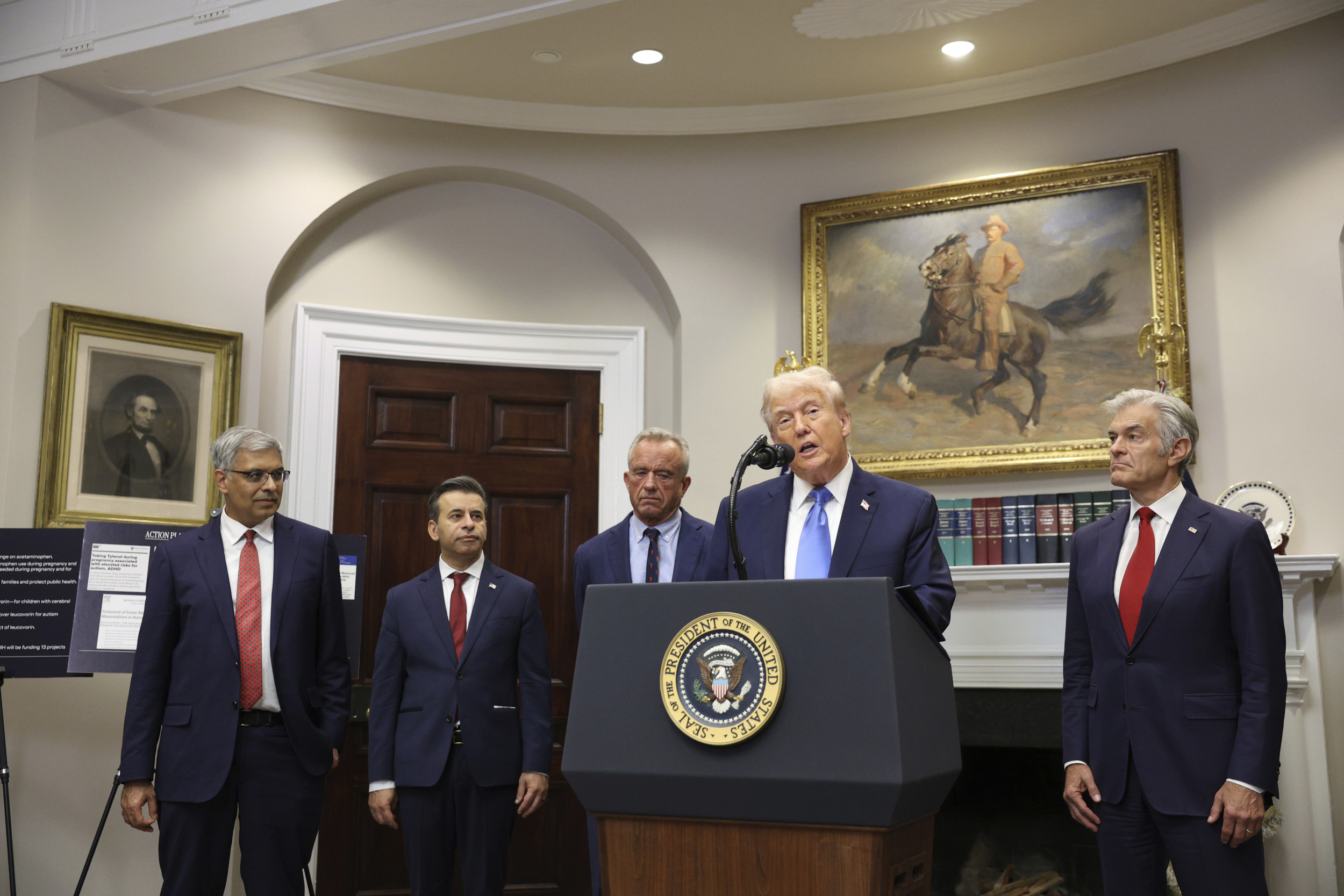
A sudden infiltration of Russian units through one of Ukraine’s most crucial defensive lines has exposed the embattled nation’s critical manpower disadvantage just as U.S. President Donald Trump prepares to discuss the future of the war with his Russian counterpart.
While the extent of Russia’s thrust toward the critical supply hub of Pokrovsk in eastern Ukraine’s Donetsk province is still unclear, analysts and former officials say the penetration speaks to a persistent problem for Kyiv that has the potential to also influence the White House’s perception going into Friday’s summit with Russian President Vladimir Putin.
“It reinforces the acknowledgement that Ukraine has a military disadvantage here,” Dan Caldwell, who recently served as senior adviser to Defense Secretary Pete Hegseth, told Newsweek.
“The Russians currently have the upper hand on the battlefield and, while for good reasons there may be an unwillingness to acknowledge that out loud directly, it also reinforces the fact that there really aren’t any good options to fundamentally change that,” he added. “From what I saw previously, and from what I’m seeing now in open-source, is that what has been building up for the Ukrainians is fundamentally a manpower issue.”
Caldwell noted that Ukrainians also suffered from “other disadvantages around certain supplies or certain munitions” including “the technological side,” where Russia’s increased use of unmanned aerial vehicles (UAVs), or drones, have also contributed to recent gains.
“But if you don’t have enough infantry to hold a line, to occupy a city, to maintain a line of communication or a supply line,” he said, “then you are going to be pushed out of these positions eventually by a force that actually has manpower, has infantry, has forces that can go and hold and seize terrain.”

Evgeniy Maloletka/AP
Manpower Advantage
Caldwell, speaking at a virtual event hosted by the Defense Priorities think tank, placed Russia’s manpower advantage at a factor of three-to-one, the same figure cited by Ukrainian President Volodymyr Zelensky during a meeting with journalists on Tuesday.
Zelensky also said that Russian forces were suffering casualties at roughly three times the rate of the Ukrainian side on a daily basis.
Kyiv and Moscow regularly dispute one another’s casualty figures provided throughout the conflict.
At the same time, the Ukrainian leader acknowledged a recent push by “groups of Russians” advancing approximately six miles toward the town of Dobropillia, located around 12 miles north of Pokrovsk. The development was first reported earlier this week by a number open-source intelligence platforms, including the Ukraine-based DeepState mapping group.
The move prompted the Ukrainian military to mobilize members of its National Guard’s First Corps Azov to respond to the incursion.
Reached for comment, the First Corps Azov referred Newsweek to a statement issued Tuesday in which the group confirmed its deployment to the Pokrovsk sector, where “the situation remains complex and dynamic.”
“The enemy is attempting to advance in this direction at the cost of significant losses in manpower and equipment,” the First Corps Azov said. “Units within the corps have planned and carried out actions to block enemy forces in the area.”
Zelensky described the infiltrators as being lightly equipped, with some already “partially destroyed” and “partially captured.” The Ukrainian Armed Forces chief of staff reported that the front was “stabilizing” as of Thursday, with clashes ongoing.
Meanwhile, Moscow-aligned officials see the battle for Pokrovsk, still referred to in pro-Russia circles by its former name, Krasnoarmeysk, as particularly decisive ahead of the looming U.S.-Russia talks.
“Krasnoarmeysk is now a focal point for everyone,” Denis Pushilin, head of the largely unrecognized, Russia-backed Donetsk People’s Republic, said Wednesday on the Soloviev Live channel, in comments carried by the official TASS Russian News Agency.
“Especially ahead of the upcoming meeting between Russian President Vladimir Putin and U.S. President Donald Trump in Alaska, this area is receiving particular attention,” Pushilin said. “The enemy is transferring more forces, including units of the Azov battalion. However, they have reason to fear because our units’ successes are clear.”
Evolving Tactics
Rob Lee, senior fellow at the Foreign Policy Research Institute’s Eurasia Program who closely tracks battlefield developments in Ukraine, told Newsweek that the “picture is not fully clear” regarding the extent to which Russia’s push toward Pokrovsk could yield a greater impact but called it “troubling development” for Kyiv.
Rather than viewing the operation as a deliberate attempt to skew the talks, Lee saw the advance as a pre-planned part of a broader trend of Russian infiltration attempts on this key axis, possibly enhanced by the use of local separatist Ukrainian units from Donetsk, as well as the Ukrainian military’s persistent manpower shortages.
“Ukrainian brigades are undermanned. They’ve been undermanned for some time, particularly the infantry component is undermanned,” Lee said. “What that means is the infantry are spending longer times in position without rotations. There are fewer infantry holding onto individual positions, the positions might be kind of spread apart.”
“In most cases, [Ukrainian forces] can still stop these infiltrators with UAVs, whether it’s in front of the frontline or behind the frontline,” he added. “But if Russia sends one guy at a time, two guys at a time, some of them will be killed, but some of them will get back. And then, if they can mass six or seven guys behind the Ukrainian frontline, then that creates problems.”
Even smaller Russian raiding parties could prove a threat to defensive lines. Lee noted that many Ukrainian positions are also held by just three soldiers as both sides seek to adapt to the realities of drone warfare, which has proven devastating to large gatherings of personnel and vehicles.
For a time, Ukraine’s innovative use of UAVs helped to even the playing field against Russia, which began the war in February 2022 with more traditional large-scale assault tactics. Ukraine’s drone arsenal includes larger, long-range attack systems such as Turkey’s Bayraktar TB2 as well as smaller platforms, including various first-person view quadcopters and loitering munitions like the U.S.-made Switchblade.
In more recent phases of the conflict, however, Moscow has accelerated its own modernization of battlefield techniques, including the use of loitering munitions like the Lancet and a domestically produced variant of Iran’s Shahed, to bolster its numerical advantage and mitigate hemorrhaging losses of personnel and equipment.
“Russia has continued to evolve. Russia has the manpower advantage that they’re trying to maximize and capitalize on,” Lee said. “So, their tactics involve a lot of infantry infiltration tactics, but they’ve also improved their UAV use. They’ve closed the gap with Ukraine on the kind of employment and organizational structure of how to use strike UAVs.”
“They’ve gotten better at using glide bombs for targets. They’ve gotten better at reconnaissance and locating targets and quickly striking them with artillery or UAVs,” he added. “And so, it’s kind of this combination of infiltration tactics and more sophisticated use of targeting.”

Russian Defense Ministry Press Service Press Service/AP
‘A Question of Sustainability’
Lee explained that the outcome of this combination — while yet to decisively shift the tide of the conflict one way or another — “leaves the perception that Russia is still advancing,” and doing so at a rate that outpaces previous gains made over the past year in a conflict that has repeatedly fallen into bloody stalemates.
And it’s not just about territory, Lee pointed out, “it’s a question of sustainability.”
“That’s the bigger issue,” he said. “And that’s why fixing the manpower situation in Ukraine is so vital to keep this war sustainable for Ukraine.”
Mark Cancian, senior adviser at the Center for Strategic and International Studies’ Defense and Security Department and former chief of the Force Structure and Investment Division at the White House’s Office of Management and Budget, also saw the Russian gains as being about more than just land.
“For the last 18 months they have been chewing away at the front line in half a dozen spots,” Cancian told Newsweek. “In that time, they have captured territory about the size of Delaware though at immense cost in casualties.”
“The recent Russian advances are worrisome, not because of the territory gained, but because of the possibility that Ukrainian defenses might collapse,” Cancian said. “A Russian breakthrough would restore maneuver to the battlefield, and Russia could bring its superior numbers to bear more effectively.”
They also serve the purpose of bolstering the Russian narrative of inevitable victory as Putin’s first face-to-face meeting with Trump in six years looms.
“Even before this latest advance, Putin thought that he was winning and that time was on his side,” Cancian said. “These recent battlefield successes will reinforce those beliefs and make him less likely to consider compromise.”
John Helin, analyst and founder of the Black Bird Group intelligence analysis team that focused on the Russia-Ukraine war, echoed the broader threat the recent Russian infiltration poses to Ukraine’s capacity to continue its defense in the long-term.
“Even without a breakthrough the great risk is in the Ukrainian use of reserves and lack of manpower,” Helin told Newsweek. “These sort of penetrations drain Ukrainian resources and stretch the frontline, further agitating Ukrainian manpower issues and making new penetrations possible.”
“Currently we are still quite some ways away from any active risk to Kramatorsk and Slovyansk,” he added, “but the recent penetration proves that even using these infantry tactics Russia can move relatively rapidly, and that the Ukrainian frontline is strained to its limits.”

Pierre Crom/Getty Images
The Kremlin’s Cards
Questions over Ukraine’s long-term capability to sustain the war effort have proven central to the U.S. debate over the conflict, fueled in part by Russian narratives of inevitable victory.
While European allies have largely committed to backing Ukraine indefinitely, Trump has publicly questioned Zelensky’s position, famously telling the Ukrainian leader he did not “have the cards” during a heated exchange at the White House in February.
Since then, Trump softened his tone on Ukraine and hardened his rhetoric toward Russia, for whom he threatened “very severe consequences” should the upcoming summit with Putin fail to yield a successful outcome on Wednesday.
But with Trump acknowledging that territorial changes were on the line in the talks, the recent Russian advances could prove pivotal to Putin’s leverage when he arrives in Alaska seeking permanent control over at least Donetsk and Luhansk, as U.S. special envoy Steve Witkoff has suggested, and potentially—as the Russian leader has repeatedly demanded—Kherson and Zaporizhzhia as well.
All four provinces were collectively annexed by Russia without international recognition following a wartime referendum held in September 2022. A fifth province, Crimea, was earlier taken by Russia following a similar unrecognized vote held in March 2014, after Russian forces seized the Black Sea peninsula in tandem with separatist uprisings in Donetsk and Luhansk, serving as prelude to the full-scale invasion launched eight years later.
Russia remains in full control of Crimea, has thus far established near-total control over Luhansk and currently occupies around three-quarters of Donetsk, Kherson and Zaporizhzhia. Altogether, the Russian presence accounts for nearly a fifth of Ukraine’s entire territory.
“Putin already has the initiative on the frontline, but having clear recent successes to point at can only strengthen his hand,” Helin said. “Earlier this year Trump famously said that Ukraine holds no cards, and these kind of developments can easily act as proof of that opinion.”
Now, Helin argue, “Putin can come to the table and try to persuade Trump that freezing the frontlines is unacceptable because Russia has no incentive for it: it will beat Ukraine eventually anyhow.”
“That’s not necessarily true, the Russians can still exhaust themselves and with the dynamics of this year, even with the recent penetration taking all of Donetsk is going to take the Russians a long time,” he added, “but it likely does give some weight to Putin’s arguments at the table as he seeks to convince Trump of his maximalist goals in Ukraine.”




